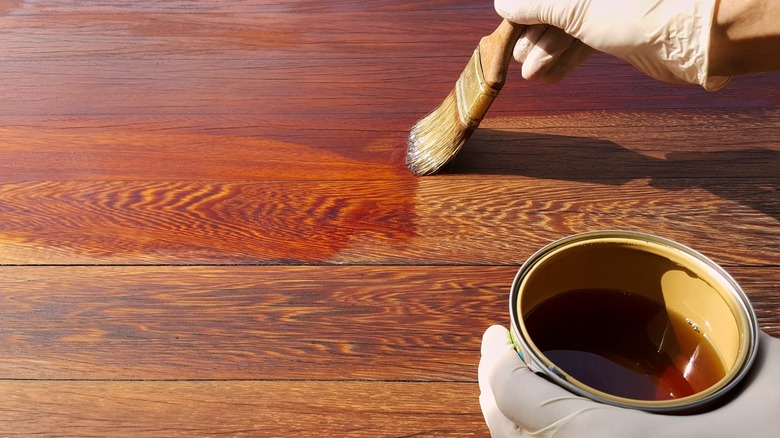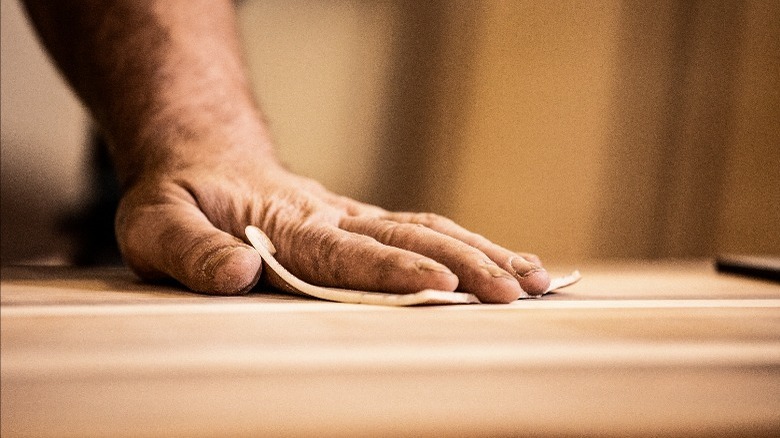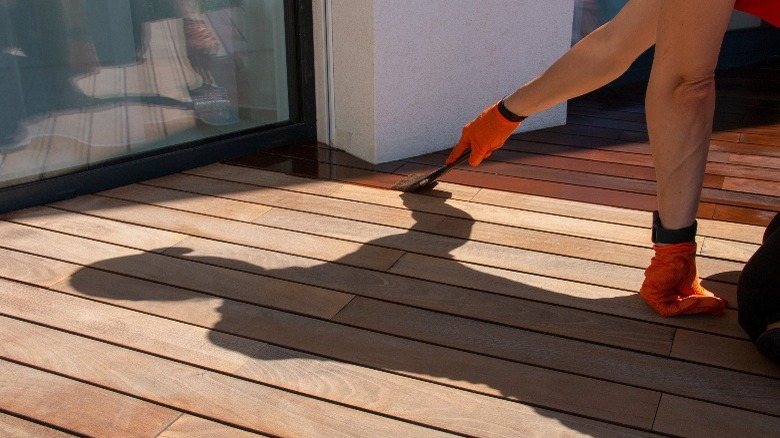All The Ways You Should Be Using Linseed Oil On Floors
Wood finishing not only helps protect the wood from wear and tear but also helps make cleaning wood easier and gives it an elegant, rich look. Before the advent of contemporary finishing materials such as polyurethane, individuals often relied on natural substances to preserve and maintain their wooden interiors and furniture. Among these, linseed oil stands out as a popular choice for finishing wood due to its affordability, user-friendly application, and eco-friendly nature.
Linseed oil, also called flaxseed oil, is made from ground and pressed flax seeds. But while extracted from the same product, there are differences. Answering a question on ShareCare, pharmacist Stacy Wiegman explained that, "Linseed oil goes through a refinement process and may contain additives that improve its paint-cleaning properties." She also clarified that it should never be ingested. With that in mind, there are plenty of reasons why you would make linseed oil your choice for your interior wood projects: It offers a durable, elastic, and water-resistant finish, ensuring long-lasting protection. Unlike other varnishes, it penetrates deeply without forming a film, avoiding cracking or peeling.
The oil is also perfect for those without experience in wood finishing — but its standout feature is its ability to enhance the wood's natural grain, giving it a beautiful gold or amber finish, thus boosting the wood's aesthetic appeal.
Use linseed oil for interior wood finish
Begin by sanding the surface of bare wood with 120 to 150-grit sanding paper to ensure that the oil penetrates. If you're working on a large area, you may use a disc or drum sander. If the wood has been previously oiled, you don't have to sand it. You shouldn't use linseed oil on wood with wax, varnish, or paint finishes, as these would prevent oil penetration. After sanding, dust and vacuum the surface to remove any excess sawdust. You can also clean the surface with a rug with mineral spirits to remove grime, scuffs, and remaining paint from the wood surface, then use a clean cloth to dry the newly cleaned surface completely.
Once done, apply the first coat of linseed oil with a cloth, brush, or cotton wick. Pour out enough oil to thoroughly coat the entire surface. Let it stay for 10 to 15 minutes before wiping off the excess oil. Skipping this step will leave you with a sticky surface. Apply two to three more coats at 12 and 24-hour intervals. Be sure to check the directions that come with the product container.
You can also use a #0000 fine steel wool, a 400 to 600 grit sandpaper, or a grey ScotchBrite pad for a light sanding between coats. For the final coat, let it cure, and don't sand after. You can also apply a thin coat of paste wax and use an electric buffer to buff the floor.
How else to use linseed oil on wood
Maintenance for woodwork treated with linseed oil is relatively minimal, generally requiring attention only once a year or less frequently, depending on the extent of wear on the finish. It's probably time to reapply and bring some life back to your hardwood floors when the finish appears discolored or dried. All you need to do is to clean the surface and let it dry completely before applying a thin layer of oil. After five to 10 minutes, wipe off any excess oil.
For spot damage repair, you can use a targeted approach. Clean the small, damaged area first, then apply linseed oil with a soft cotton cloth, reapplying until the area remains wet for 15 to 20 minutes, then wiping away any excess. You can also use linseed oil to fix a patchy finish on your hardwood floor.
It's important to note that linseed oil is often used for interior wood finishing and isn't ideal for exposed and exterior flooring. Because it isn't waterproof, it may encourage mildew and mold formation, especially in high-moisture environments. Also keep in mind it yellows when exposed to temperature changes like humidity and light exposure and has no UV resistance to protect the wood from absorbing UV light.


